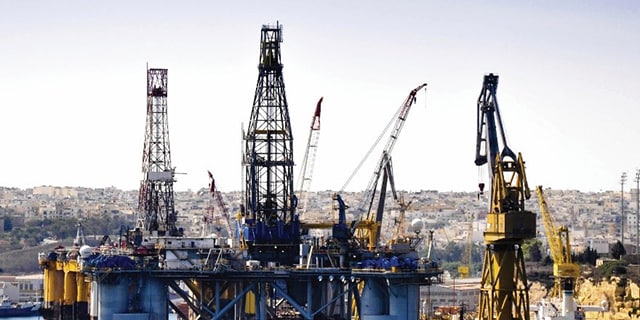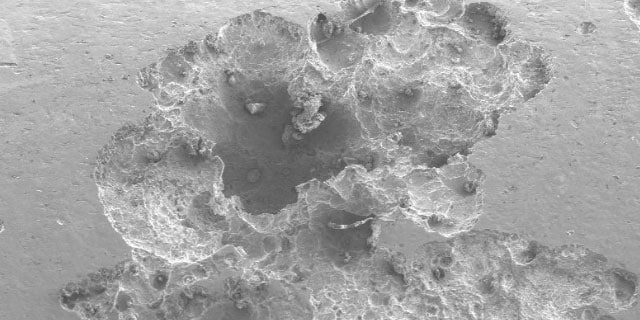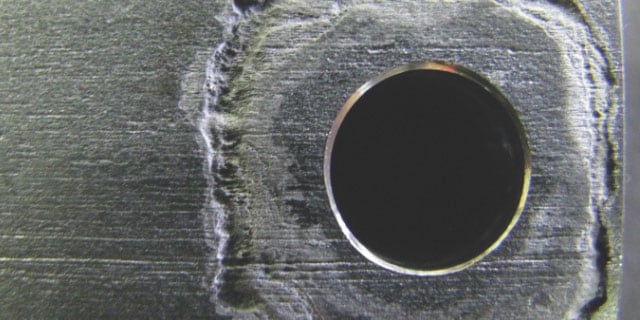: Pitting Corrosion vs. Crevice Corrosion: Identifying the Differences

Pitting Corrosion vs. Crevice Corrosion: Identifying the Differences
June 25, 2019 |Behram Ginwalla, senior product manager
Corrosion—the deterioration of engineering materials by chemical interaction with their environment—is an extraordinarily costly problem. Damage to unchecked corrosion on tubing systems is a leading cause of profit loss for offshore and nearshore applications, costing billions each year. Corrosion can be prevented, so long as companies know what to look for and take preemptive measures to reduce corrosion risks before it’s too late.
Nearly every metal used throughout our world corrodes under certain circumstances. There are steps that can be taken to prevent corrosion in oil and gas applications, particularly offshore. These steps require a fundamental understanding of the different types of corrosion and their causes. Knowing where to look for corrosion can minimize risks on oil rigs and in refineries—saving significant time and money.
Interested in finding the right materials for offshore and nearshore environments? Take steps to control corrosion with Swagelok’s Material Selection Guide.
How Corrosion Occurs
Corrosion occurs when a metal atom is oxidized by a fluid, leading to a loss of material on the metal’s surface. The resulting loss of material reduces the wall thickness of components made from carbon and low alloy steels which are affected by general corrosion, making them prone to mechanical failure.
Metal tubing systems are most often used for analytical and process instrumentation, hydraulic lines, and control and utility applications. Many engineered metals used in oil and gas applications are made from stainless steel which contains more than 10% chromium. The latter helps form an oxide layer which protects the metals from corrosion. Stainless steel corrosion does occur, however, when environmental conditions cause that layer to break down.
Just about every metal corrodes under certain circumstances. For example, rust is a commonly occurring byproduct of carbon steel corrosion, resulting from iron corroding and forming iron oxide. However, many other types of corrosion exist. Each type poses a threat that must be evaluated when selecting the optimal material for your application.
Identifying Common Types of Corrosion
There are numerous types of corrosion that can wreak havoc on oil and gas installations. Many types of corrosion are specific to the metal’s chemical composition and environment. As you read on, we will focus on two primary forms of localized stainless steel corrosion: pitting corrosion and crevice corrosion.
Pitting Corrosion

Although usually detectable through thorough visual inspection, these pits can grow deep enough to perforate a tube wall entirely. Pitting corrosion can also facilitate the initiation of cracks in tensile stressed components. Environments with higher chloride concentrations, including those created by evaporation from deposited saltwater droplets, are prone to pitting corrosion—especially at high temperatures.
When examining metal tubing for pitting corrosion, look for reddish-brown iron oxide deposits as well as potential pits that may have formed on the metal surface.
Crevice Corrosion

In a typical fluid system, crevices exist between tubing and tube supports or clamps, between adjacent tubing runs, and underneath dirt and deposits that may have accumulated on surfaces. Crevices are virtually impossible to avoid in tubing installations, and tight crevices pose one of the greatest dangers to stainless steel integrity. Crevice corrosion occurs when seawater diffuses into a crevice, leading to a chemically aggressive environment where corrosion-causing ions cannot readily diffuse out of the crevice. In such a scenario, the entire surface within the crevice can corrode at a rapid rate.
Crevice corrosion can only be observed visually when a tubing clamp is removed from the installed tubing. It is important to remember that crevice corrosion can occur at lower temperatures than pitting corrosion.
How to Prevent Corrosion
Corrosion can, in many circumstances, be minimized by upskilling workforces with basic materials knowledge:
- Material Selection:First, consider the choice of materials for tubing applications, from the tubing itself to tube supports and clamps. 316 stainless steel tubing works well in many installations so long as it is kept clean and temperatures are not excessively high. In warmer climates, especially in locations where salt deposits readily form and in installations where rust from carbon steel structural beams and floors accumulate on stainless steel surfaces, corrosion of 316 stainless tubing is more readily observed.
For these situations, tubing from superaustenitic or superduplex stainless steel offers much better corrosion resistance. The higher yield and tensile strength of superduplex stainless steel also make it easier to build systems that must be rated to a higher maximum allowed working pressure (MAWP.) To avoid costly errors and determine which material is right for your application, contact your local authorized Swagelok sales & service center for guidance selecting the right products and materials. - Placement and Design:Careful system practices are necessary for corrosion prevention to minimize the number of locations where crevice corrosion can occur. One way to diminish crevices in a tube system is to avoid placing tubing directly against walls or against each other. When crevice corrosion of 316 stainless steel tubing is observed, one can replace 316 tubing with more corrosion-resistant tubing, which can be installed with cost-effective 316 tube fittings. Swagelok offers several engineered combinations of 316 stainless steel tube fittings with tubing from different corrosion resistant alloys.
Corrosion and Materials Science Training
Beyond these simple measures, the best approach to preventing corrosion involves in-depth training and the implementation of a regular and robust corrosion-monitoring program. Swagelok offers materials science training to teach engineers, technical associates and anyone else who is involved in the material selection process how to select the right corrosion resistant alloys for your fluid systems. Building a basic understanding of corrosion—what it looks like, where it occurs, and for what reasons—among those who work with tubing systems every day can prevent material failure and costly repairs. Contact your local Swagelok sales & service center to learn how a material science training program can help your organization fight back against corrosion.
